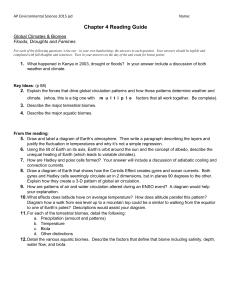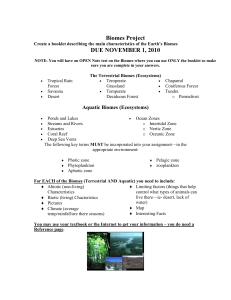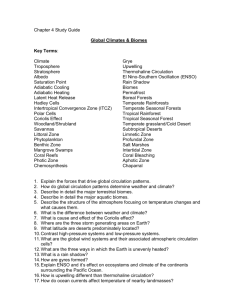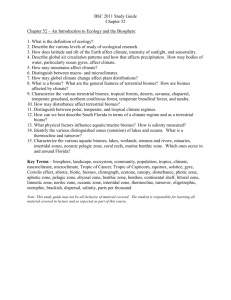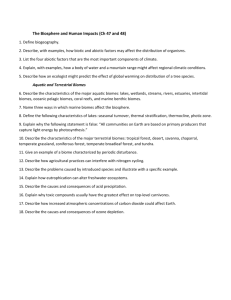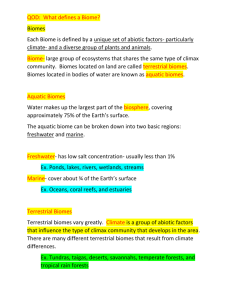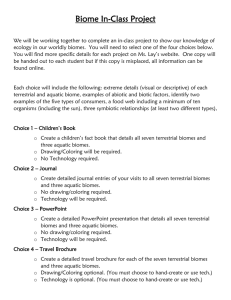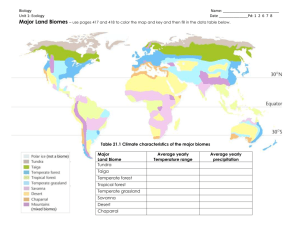AP Environmental Science: Climate & Biomes Study Guide
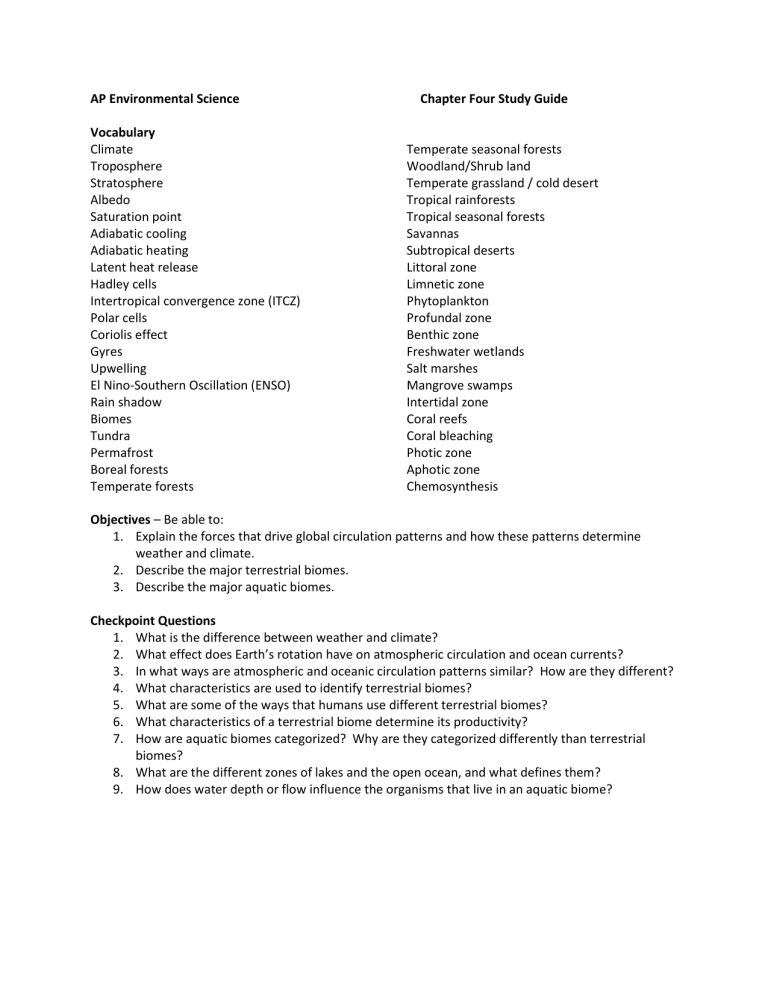
AP Environmental Science Chapter Four Study Guide
Vocabulary
Climate
Troposphere
Stratosphere
Albedo
Saturation point
Adiabatic cooling
Adiabatic heating
Temperate seasonal forests
Woodland/Shrub land
Temperate grassland / cold desert
Tropical rainforests
Tropical seasonal forests
Savannas
Subtropical deserts
Latent heat release
Hadley cells
Intertropical convergence zone (ITCZ)
Polar cells
Coriolis effect
Gyres
Upwelling
El Nino-Southern Oscillation (ENSO)
Rain shadow
Biomes
Tundra
Permafrost
Boreal forests
Temperate forests
Littoral zone
Limnetic zone
Phytoplankton
Profundal zone
Benthic zone
Freshwater wetlands
Salt marshes
Mangrove swamps
Intertidal zone
Coral reefs
Coral bleaching
Photic zone
Aphotic zone
Chemosynthesis
Objectives – Be able to:
1.
Explain the forces that drive global circulation patterns and how these patterns determine weather and climate.
2.
Describe the major terrestrial biomes.
3.
Describe the major aquatic biomes.
Checkpoint Questions
1.
What is the difference between weather and climate?
2.
What effect does Earth’s rotation have on atmospheric circulation and ocean currents?
3.
In what ways are atmospheric and oceanic circulation patterns similar? How are they different?
4.
What characteristics are used to identify terrestrial biomes?
5.
What are some of the ways that humans use different terrestrial biomes?
6.
What characteristics of a terrestrial biome determine its productivity?
7.
How are aquatic biomes categorized? Why are they categorized differently than terrestrial biomes?
8.
What are the different zones of lakes and the open ocean, and what defines them?
9.
How does water depth or flow influence the organisms that live in an aquatic biome?
